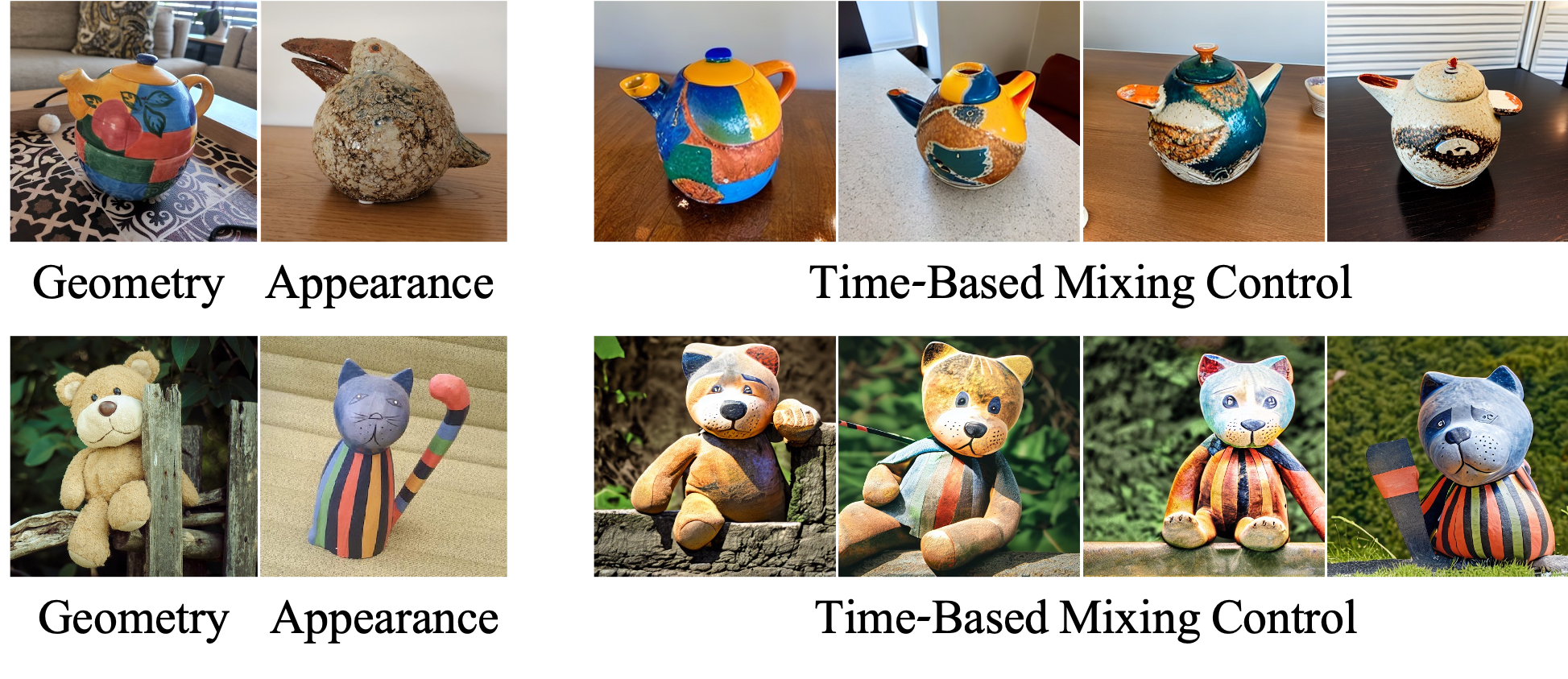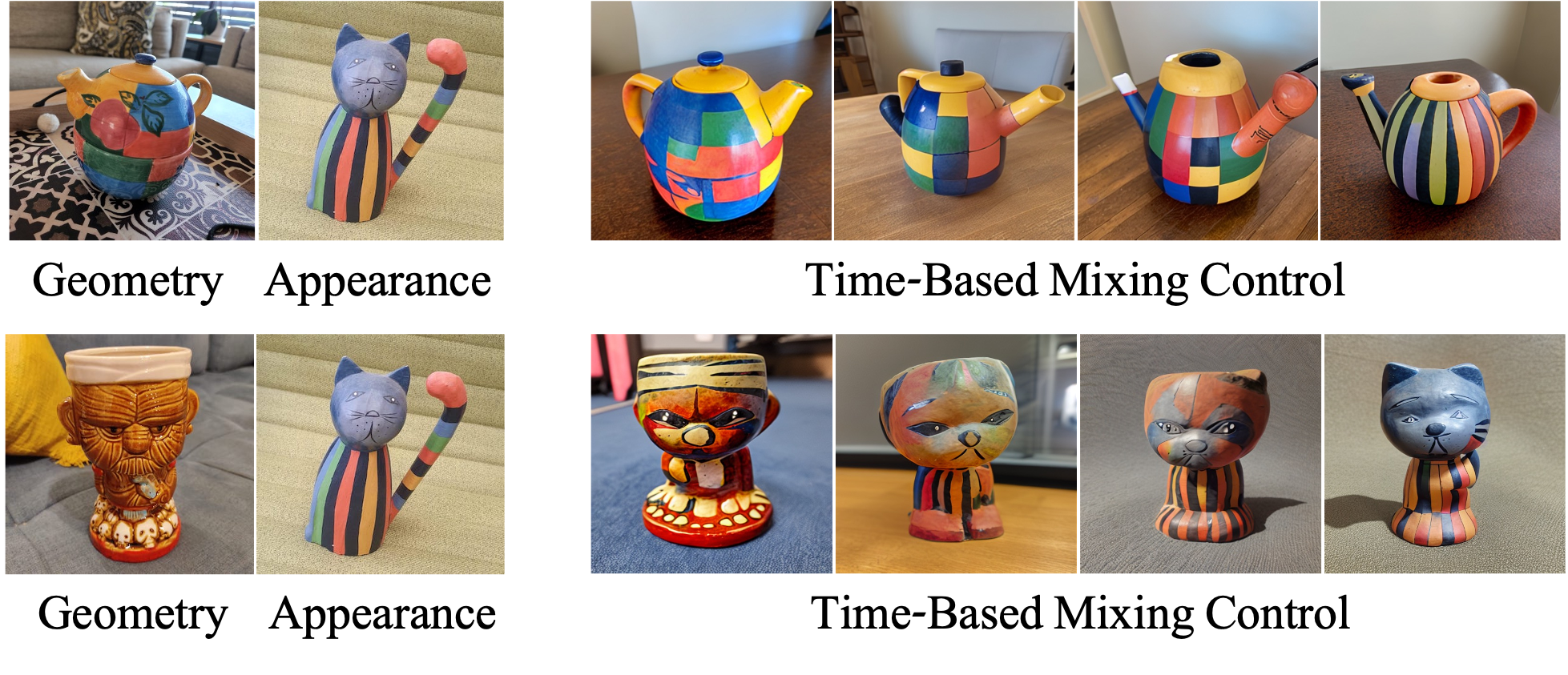Abstract
A key aspect of text-to-image personalization methods is the manner in which the target concept is represented within the generative process. This choice greatly affects the visual fidelity, downstream editability, and disk space needed to store the learned concept. In this paper, we explore a new text-conditioning space that is dependent on both the denoising process timestep (time) and the denoising U-Net layers (space) and showcase its compelling properties. A single concept in the space-time representation is composed of hundreds of vectors, one for each combination of time and space, making this space challenging to optimize directly. Instead, we propose to implicitly represent a concept in this space by optimizing a small neural mapper that receives the current time and space parameters and outputs the matching token embedding. In doing so, the entire personalized concept is represented by the parameters of the learned mapper, resulting in a compact, yet expressive, representation. Similarly to other personalization methods, the output of our neural mapper resides in the input space of the text encoder. We observe that one can significantly improve the convergence and visual fidelity of the concept by introducing a textual bypass, where our neural mapper additionally outputs a residual that is added to the output of the text encoder. Finally, we show how one can impose an importance-based ordering over our implicit representation, providing users control over the reconstruction and editability of the learned concept using a single trained model. We demonstrate the effectiveness of our approach over a range of concepts and prompts, showing our method's ability to generate high-quality and controllable compositions without fine-tuning any parameters of the generative model itself.
Examples of Personalized Text-to-Image Generation
with NeTI









How Does it Work?

- We introduce a new text-conditioning latent space \(\mathcal{P}^*\) that is dependent on both the denoising process timestep and the U-Net layers.
- This space-time representation is learned implicitly via a small mapping network.
- The entire network represents a concept in \(\mathcal{P}^*\) defined by its learned parameters, resulting in a neural representation for Textual Inversion, which we call NeTI.
- We also impose an importance-based ordering over our implicit representation, providing control over the reconstruction and editability of the learned concept at inference time.
What Can it Do?
Controlling the Editability with Nested Dropout
Using our dropout technique, users can control the balance between the generated image's visual and text fidelity at inference time. When a stronger dropout is applied we get a more coarse/semantic representation of our concept that is more amenable to edits and new compositions.
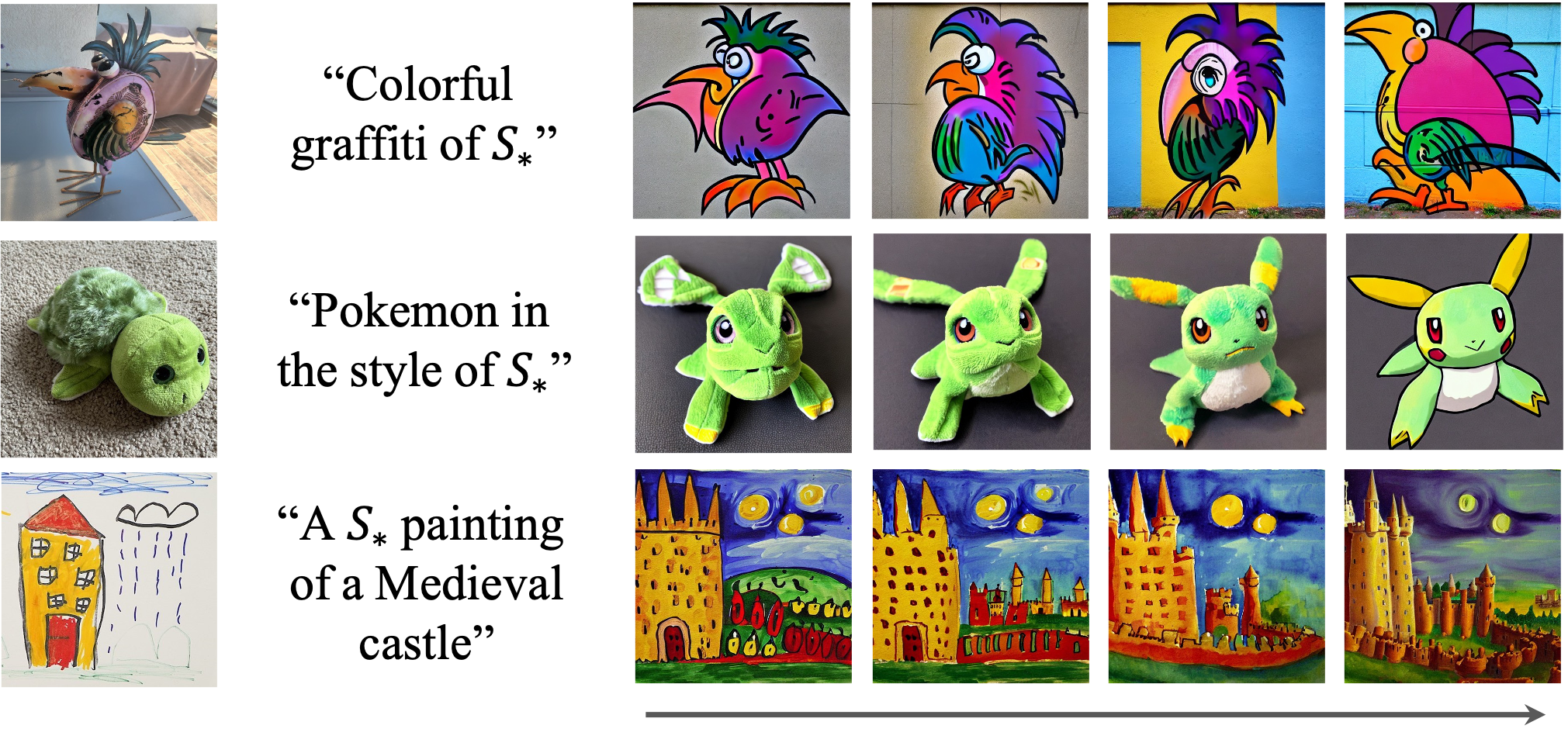
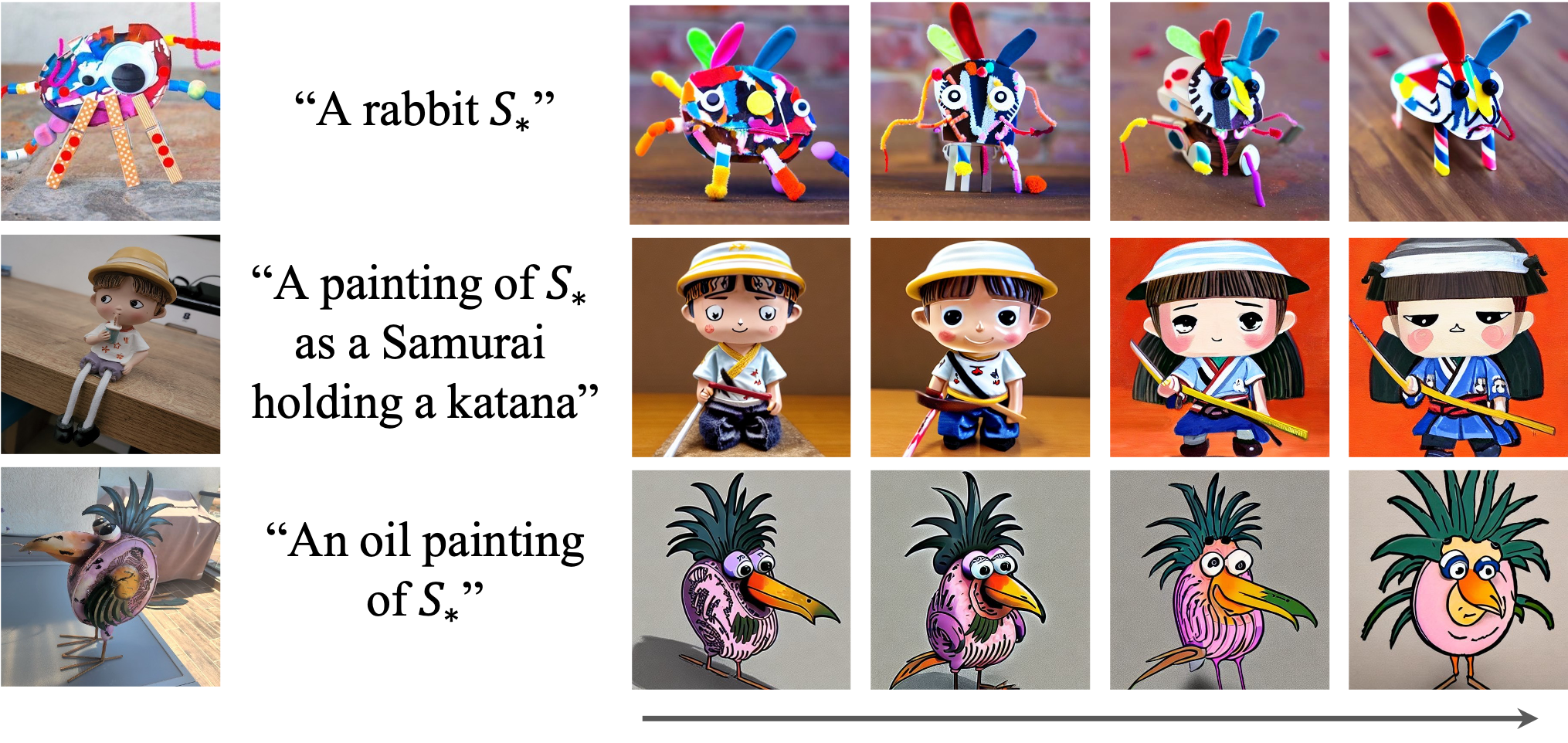
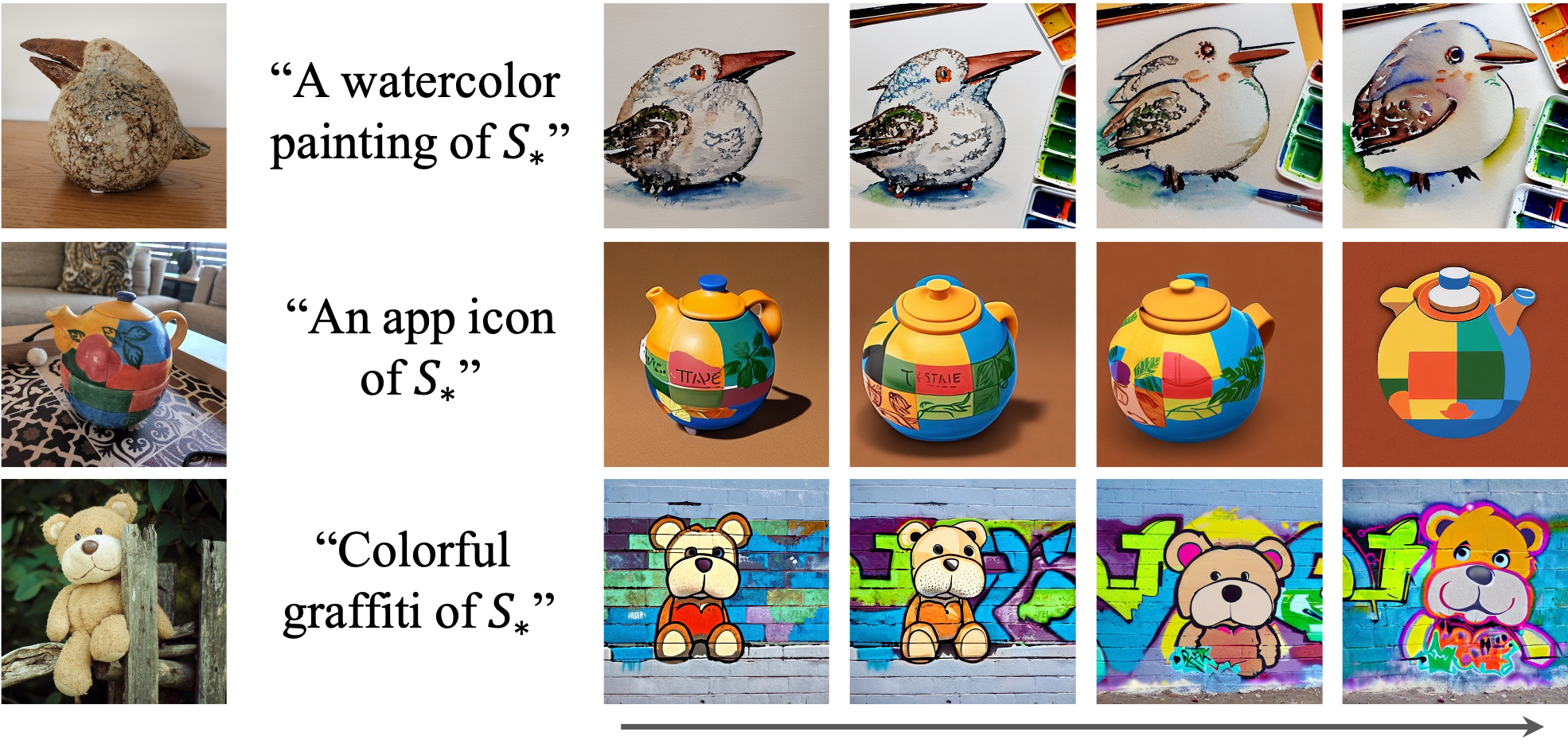
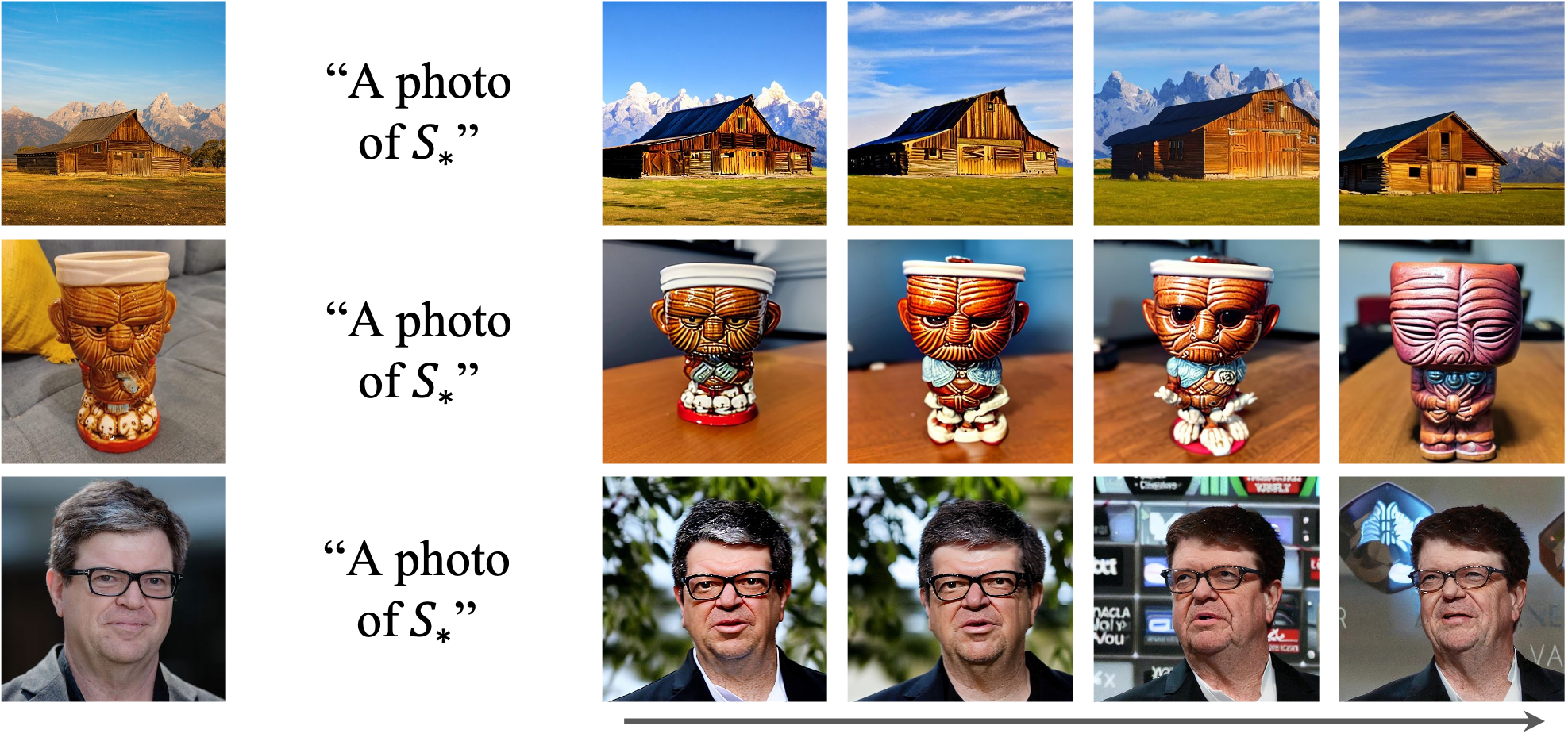
Per-Timestep Decomposition
We can illustrate which concept-specific details are captured at different denoising timesteps. At the early timesteps, NeTI learns to capture coarse details such as the concept's general structure and color scheme. As we continue along the denoising process, more concept-specific details are added.
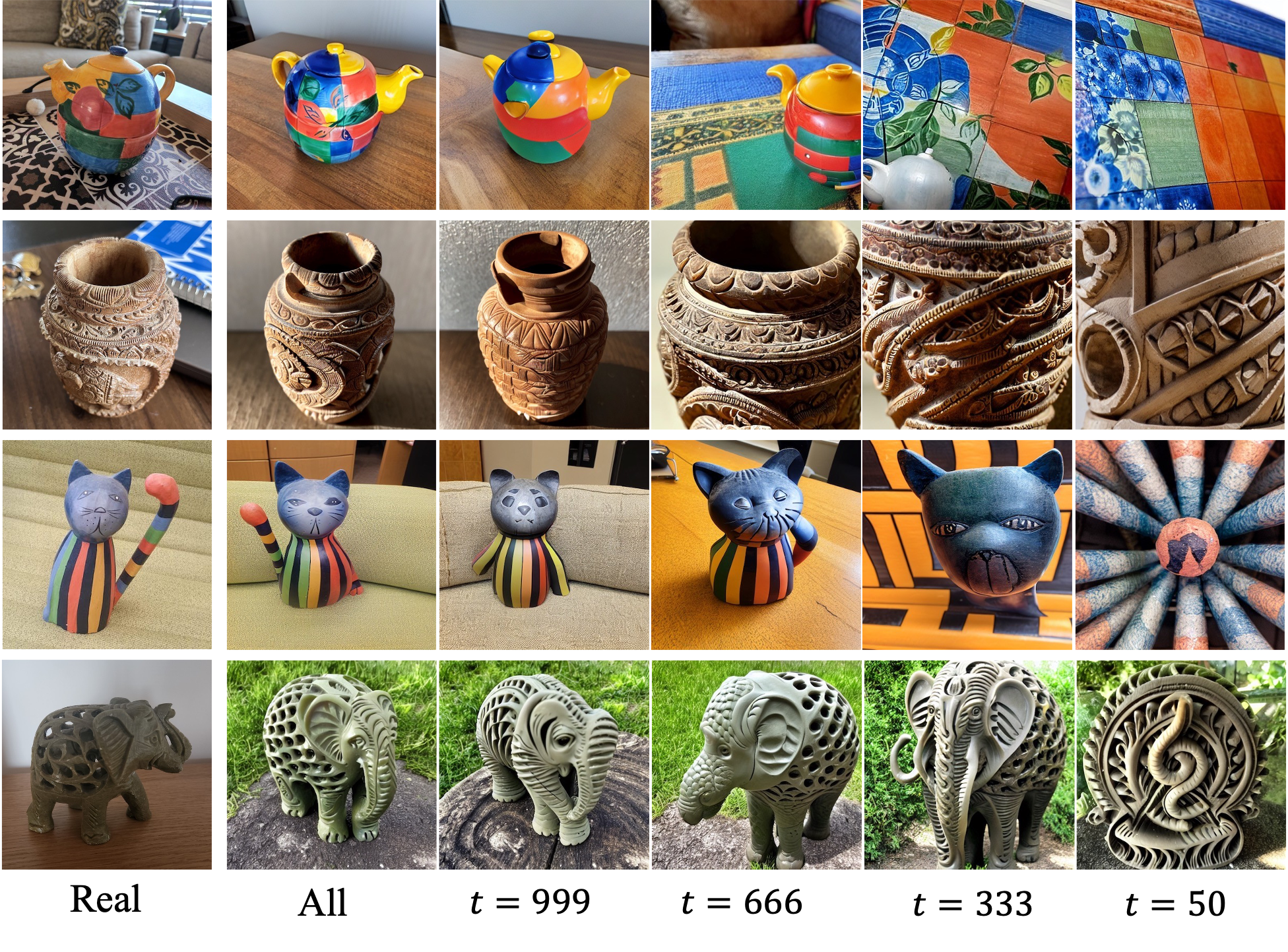
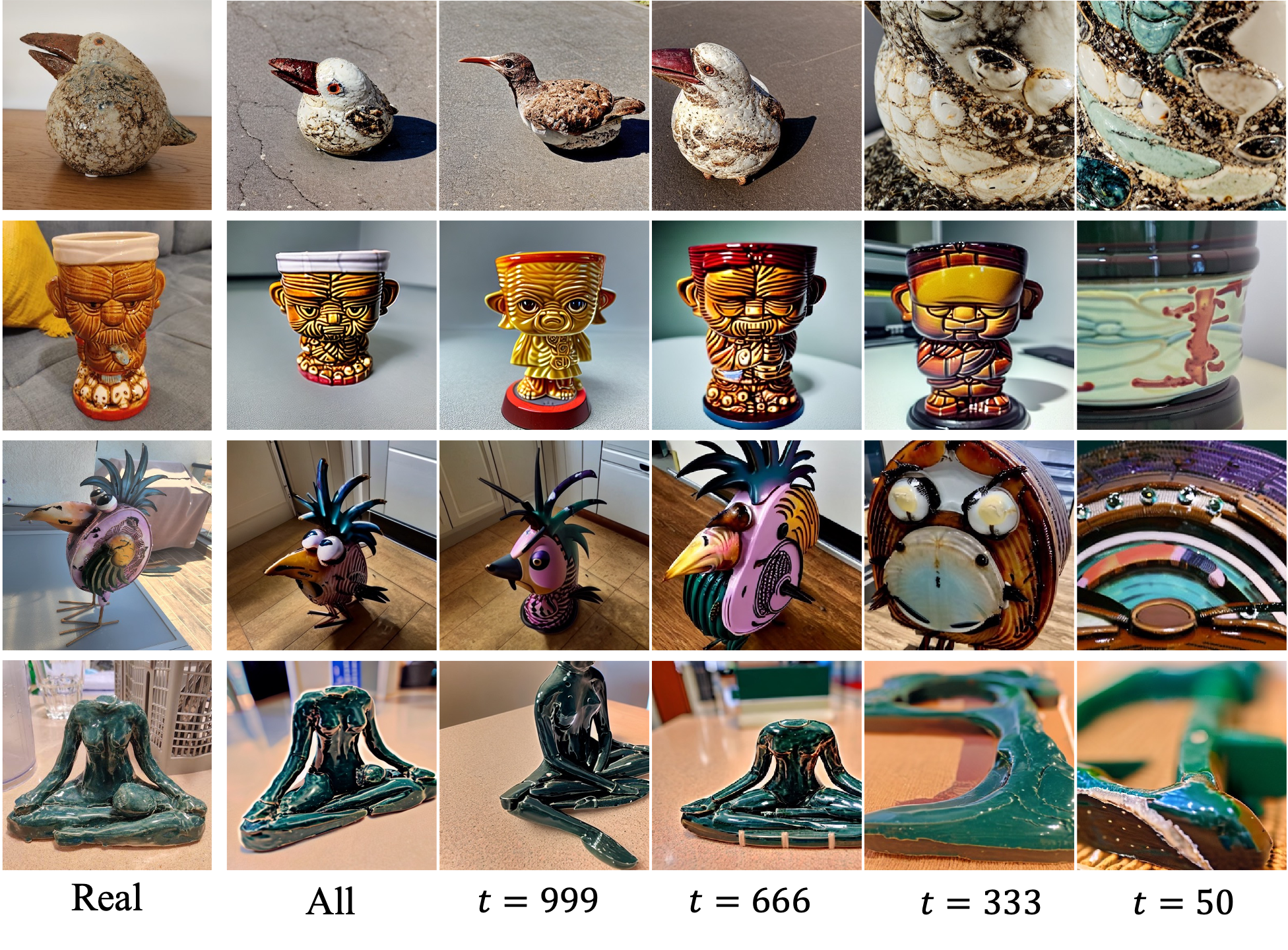
Style Mixing
We can also mix the geometry and appearance of two learned concepts. By starting to perform the mixing at different timesteps, we can control how much information is passed from the geometry concept to the output image.
